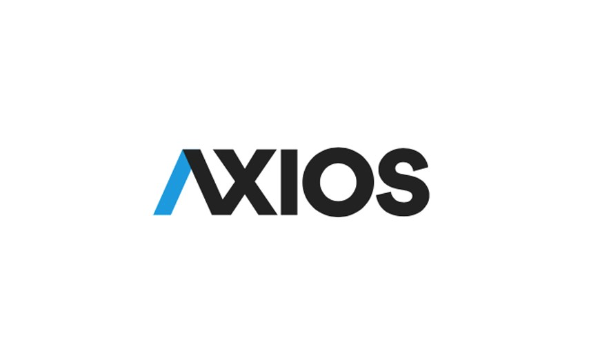
In the whirlwind of national headlines and political debates, a quiet yet impactful shift has been happening right under the noses of American consumers. While attention is often captured by flashy economic indicators or high-profile legislation, several key consumer protections have expired without the public fully realizing what’s at stake.
These safeguards—ranging from pandemic-era financial support to digital privacy rules—once acted as buffers against rising costs, corporate overreach, and predatory practices. Their expiration didn’t come with fireworks or major announcements, but the effects are already starting to trickle into everyday life, from surprise fees to dwindling financial wiggle room. As the economic landscape evolves, it’s crucial to understand what protections are no longer in place—and what that means moving forward.
1. The End of Student Loan Forbearance
After several extensions, the student loan forbearance enacted during the pandemic officially expired, placing millions back into repayment. This federal freeze once offered relief to borrowers by pausing payments and halting interest accrual, allowing families to prioritize basic needs. Without it, monthly bills have returned with full force, even as inflation continues to stretch household budgets. The transition has caught many borrowers off guard, with some facing confusion about their new payment amounts and due dates. What was once a national lifeline has now vanished, leaving borrowers to navigate repayment amid rising costs.
2. Sunsetting of Emergency SNAP Benefits
Pandemic-era increases to the Supplemental Nutrition Assistance Program (SNAP) quietly ended earlier this year in most states. These emergency allotments had temporarily raised food assistance levels, helping low-income families combat surging grocery prices. With their expiration, households are now receiving significantly less per month, even as food costs remain high. This rollback has left many scrambling to adjust their meal planning and budgets with fewer resources. The shift has led to a growing strain on local food banks, which are reporting a sharp increase in demand.
3. Expiration of the Rental Eviction Moratorium
The federal eviction moratorium, which once shielded renters from displacement during the pandemic, has completely phased out. While some local protections remain, the national safety net is no longer in place, leaving tenants vulnerable to housing instability. Rent prices have continued to rise in many areas, exacerbating the affordability crisis for working families. Legal aid organizations have reported a spike in eviction filings as landlords move quickly to reclaim properties. This change has left many renters with fewer options and little time to adjust to the new legal landscape.
4. Lapse of Free COVID Testing and Treatments
Free COVID-19 testing and treatment programs funded by the federal government have largely ended. Previously, individuals—regardless of insurance status—could access tests and treatments at no out-of-pocket cost. Now, many must pay out of pocket or navigate insurance networks, which has discouraged some from seeking care. Pharmacies and clinics have scaled back free services, especially in low-income communities. With new variants still circulating, this rollback may create public health blind spots and widen care disparities.

5. Fading Away of Airline Fee Transparency Rules
Regulations requiring airlines to clearly disclose fees for baggage, cancellations, and seating have been rolled back or left unenforced. Consumers now face more confusing booking processes, with hidden costs often appearing late in transactions. Advocacy groups have warned that this lack of transparency enables price manipulation and frustrates budget-conscious travelers. Without clear fee breakdowns, comparison shopping between carriers has become more difficult. The rollback allows airlines to upsell aggressively, often at the expense of informed consumer choice.
6. Quiet End to Pandemic-Era Utility Shutoff Protections
Many states implemented temporary bans on utility shutoffs during the pandemic, preventing power, water, and heat from being disconnected for non-payment. Those protections have since expired in most regions, even as utility costs climb across the country. Struggling households now face harsher consequences if they fall behind on payments. Shutoffs have resumed, disproportionately affecting seniors, low-income residents, and rural families. Some regulators are calling for permanent reforms, but for now, the shields are down.
7. Rolling Back of Auto Repossession Deferrals
Temporary policies put in place to halt or delay car repossessions during the height of the pandemic have quietly expired. Auto lenders are no longer required to offer grace periods or loan flexibility, even for those experiencing financial hardship. With used car prices still inflated and public transportation unreliable in many areas, losing a vehicle can be life-altering. Repossession rates have started to climb again, particularly among subprime borrowers. The return to pre-pandemic practices has hit working-class families hardest.
8. Expiration of Bank Overdraft Fee Leniency
Several banks relaxed or paused overdraft fees during the pandemic, aiming to offer temporary relief to account holders living paycheck to paycheck. In 2025, those consumer-friendly practices have largely faded, with many financial institutions reinstating the full range of penalty fees. Critics argue that these fees disproportionately impact the poorest customers, creating cycles of debt from minor account imbalances. The Consumer Financial Protection Bureau has pushed for reform, but legislation has stalled. Without renewed attention, consumers are once again on the hook for expensive banking errors.
9. Retirement Account Flexibilities No Longer in Effect
Pandemic-era rules allowed penalty-free early withdrawals from retirement accounts under certain conditions, offering flexibility for those in financial crisis. That provision quietly expired, reinstating the standard 10% penalty for early withdrawals before age 59½. Households still struggling from job loss or medical bills no longer have this financial escape valve. While the rule was always meant to be temporary, its removal has caught many off guard amid ongoing economic uncertainty. For those seeking to tap into their savings, the costs have become significantly steeper.
10. Disappearance of Temporary Credit Reporting Safeguards
The CARES Act once required lenders to report certain accounts as “current” on credit reports if borrowers were under approved deferment or forbearance. That protection has ended, meaning missed or late payments can now more quickly harm credit scores. Consumers recovering from financial setbacks now face increased difficulty in qualifying for mortgages, auto loans, and even employment screenings. The loss of this safeguard could stall economic recovery for thousands of families still trying to rebuild. Credit bureaus have resumed standard practices, often with little notice to affected consumers.
A Silent Shift with Loud Consequences
While the expiration of these consumer protections may not have made front-page news, their absence is being felt deeply across the country. For many, these policies served as essential lifelines during turbulent economic times, and their removal has left a noticeable gap. Whether it’s housing, food access, or financial flexibility, millions of Americans are now navigating a system with fewer safety nets. As policymakers debate future reforms, the consequences of these expired safeguards will shape how families plan, spend, and survive.
What protections do you think should be reinstated—or made permanent? Share your thoughts in the comments below.
Read More
7 Retail Return Policies That Are Being Used Against Customers
7 Consumer “Protections” That Actually Help Corporations Win
The post 10 Consumer Protections That Quietly Expired This Year appeared first on Everybody Loves Your Money.







